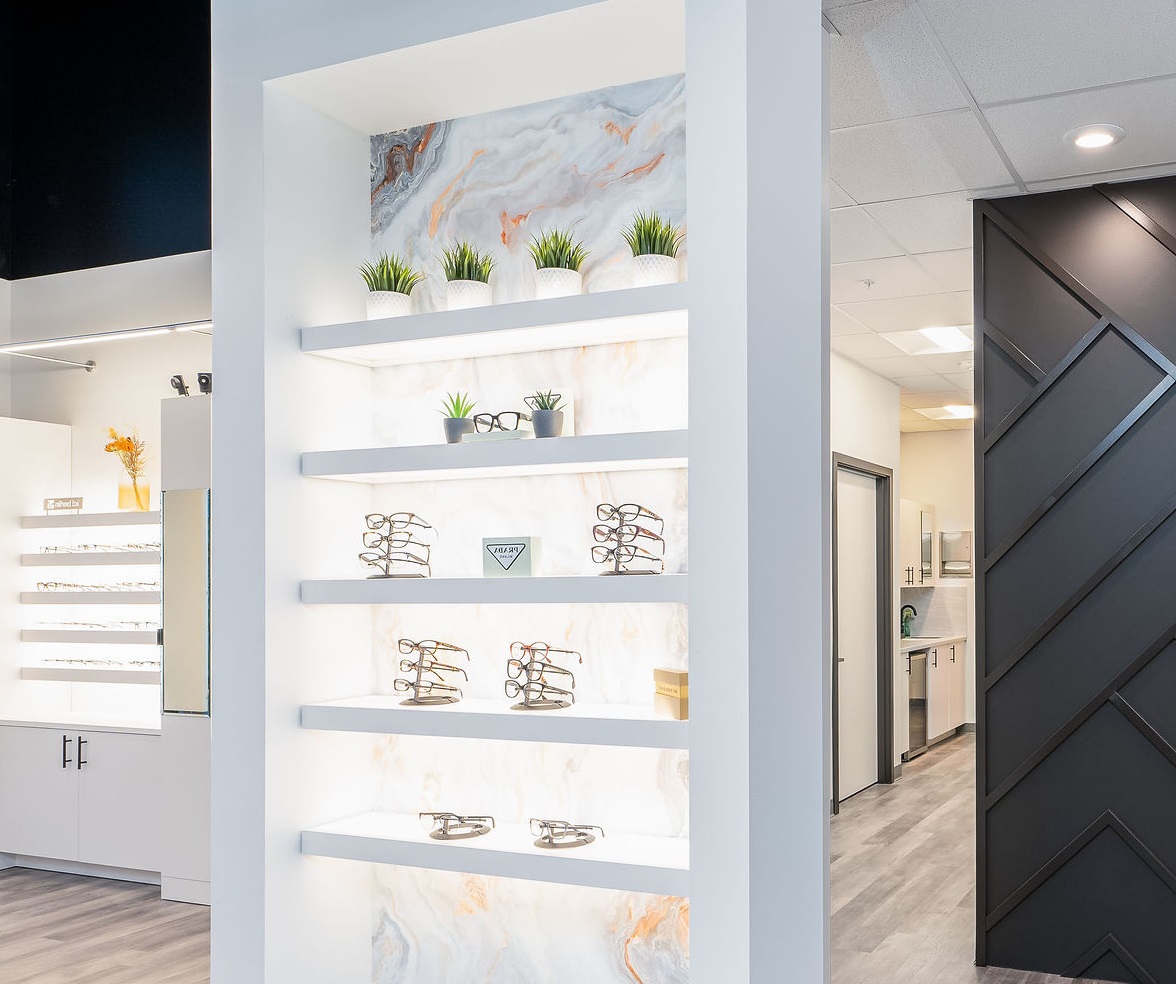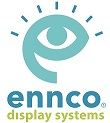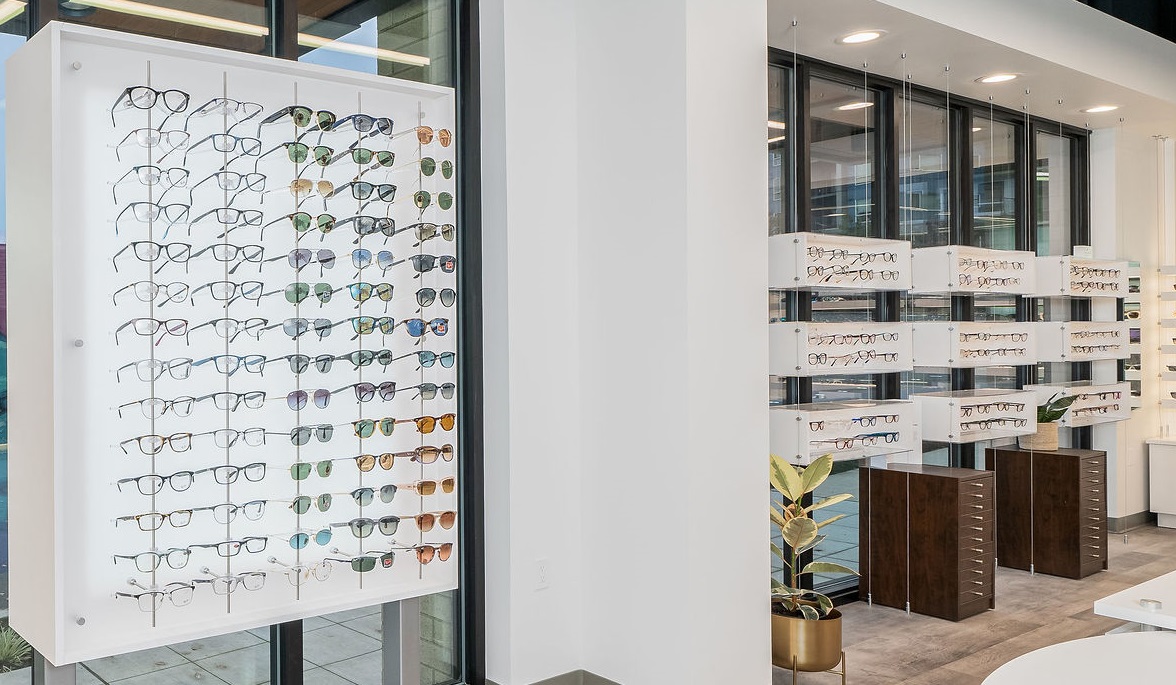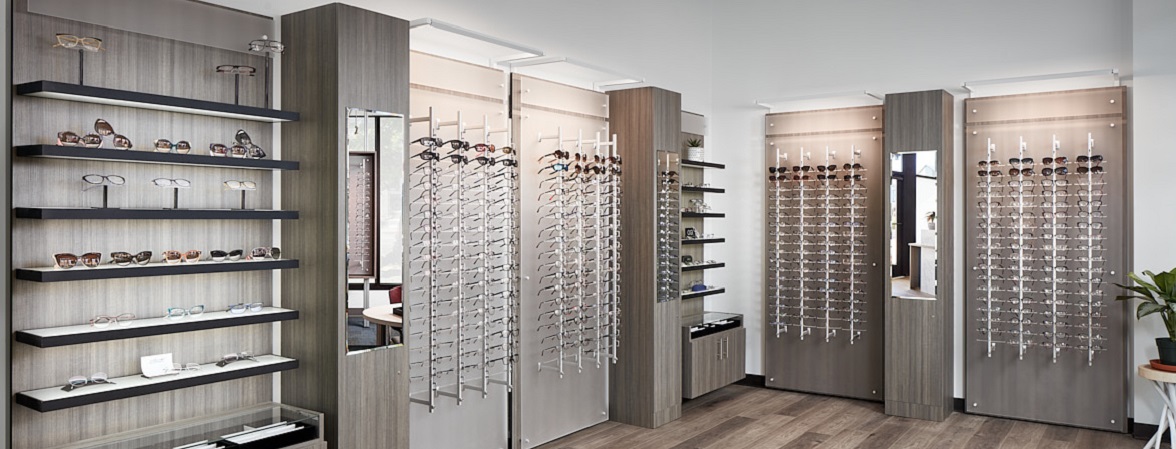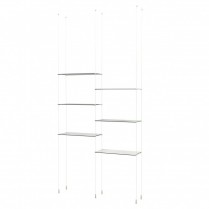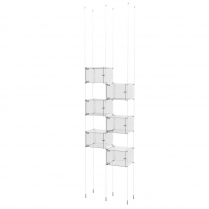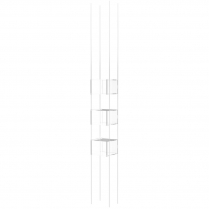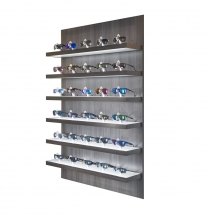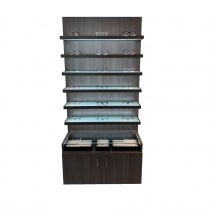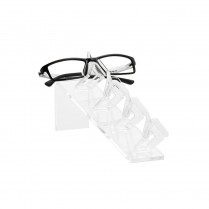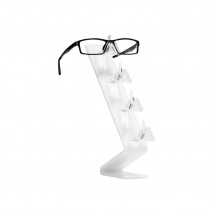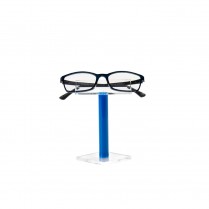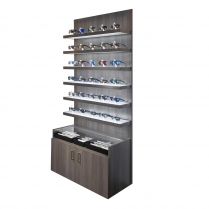Eyewear displays come in so many styles, colors and options that deciding what is best for you can be quite overwhelming. I tend to take a very specific view of merchandising that is sometimes overlooked in the search for a WOW factor aesthetic environment. Having a really cool space/store helps define the market position of the merchandise you will present, it has NOTHING to do with holding, presenting or securing the merchandise you wish to promote and sell.
Once you have determined your “theme” for your space, each type of typical merchandising must be determined. Many of the decisions related to this are driven by how many frames you wish to show, what percentage of your dispensing space is window vs. wall and how you wish to light the merchandise. After this, merchandising decisions come down to height placement of the product, background to the product, density of display, and security of the merchandise.
Windows are the MOST DIFFICULT merchandising medium. I have seen far too many signed leases for spaces with LOTS of windows and clients were ecstatic to have them. However, merchandise shown against the backdrop of a parking lot or busy street or sidewalk distracts from “actually seeing the merchandise”. This then leaves only the option of a background between the window and the merchandising, regardless of what that is, you then block the view from outside into the space. With that in mind, we do have many display options specifically for windows that provide frames a positive showcasing environment while utilizing the space in front of windows.
Shelves, whether lit or not, are coming back into style. For shelves, the choice is to merchandise single frames on shallower shelves mounted closer together vertically OR to show multiple frames on countertop displays on deeper shelves with more vertical space between them. Either way, you will likely achieve similar frame counts in the same space. Most people don’t give much thought to the vertical position of the shelves and how the frame then presents itself to the patient. If the shelf (or counter if that is the first shelf) is 30” above the finished floor or lower, the frames on the low shelves need to be on displays that point the frame UPWARD, so the face of the frame is visible to the person standing at the fixture (displays like our Low Angler and Pediments are great options). Likewise, the same can be said for frames that are on shelves at the mid to top portion of the display. Those frames need to be on counter fixtures that orient the frames so the patient sees them directly on (displays like our High Angler, Tray Elegante & ShowOff). The last component of shelf display is more complex because it involves security. While glass showcases provide more vertical space between shelves for using counter displays, they also require an additional sales approach which we discuss in detail on our previous blog posts on security (Should My Retail Displays Be Locked? What Are the Best Ways to Secure My Inventory?). The other options available are some locking counter displays that provide hands on touch, but don’t require full showcasing like our Sentry Countertop Peg.
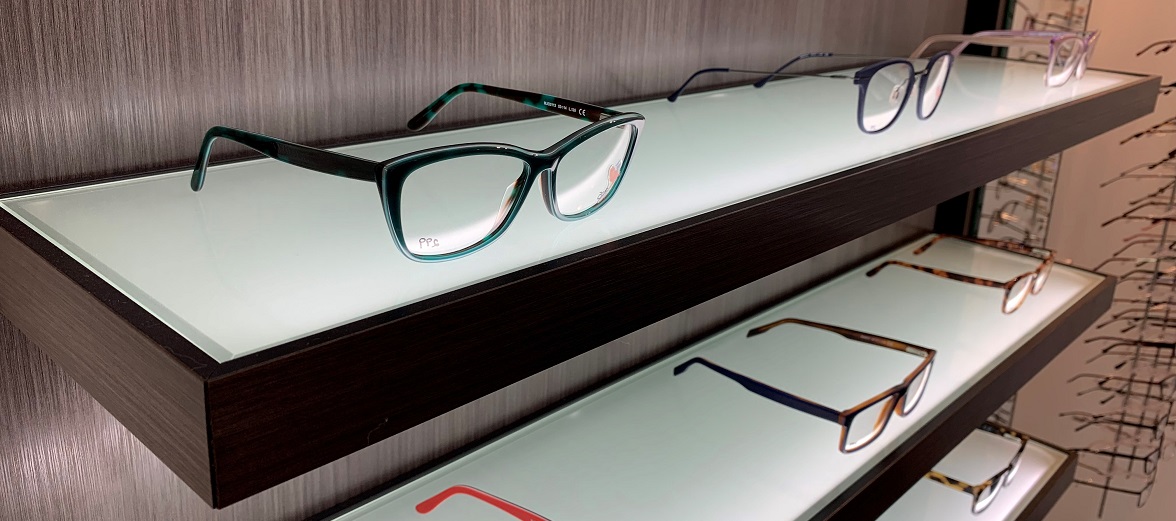
Frame trays have long been a way to integrate mass display into wall or freestanding fixtures. If your style of dispensing includes personal presentation of products to clients at the dispensing station or even a more casual couch setting, frame trays offer a great option to highlight your inventory.
The merchandising methods above each have specific places in almost every office. Likewise, the wall displays also need (and have) their own places. There are so many options for wall fixturing that it makes sense to discuss “the SELL ZONE” vs. the styles that area available. The “SELL ZONE” is really between 30” AFF and 74” AFF. If frames are merchandised above or below these levels, they are not likely to sell due to their physical position. Nobody needs dead inventory, so keep these dimensions in mind when you calculate how many frames you need to show on a wall and whether or not your space will provide enough room. If you push it to have frames outside these basic dimensions, you will likely just be wasting space and creating a carrying cost for frames you won’t sell.
Feature Display
The last type of display that deserves mention is FEATURE display. This is my absolute favorite, but clients rarely opt for this due to the cost. Feature displays can be in wall, counter, or window display variety and they create a way to showcase either a single frame with “lifestyle accessories” or placed on a unique fixture. No matter how you choose to create feature display, or your fixture vendor suggests, it is a highly effective method of “pushing” a product you wish everyone to focus on.
